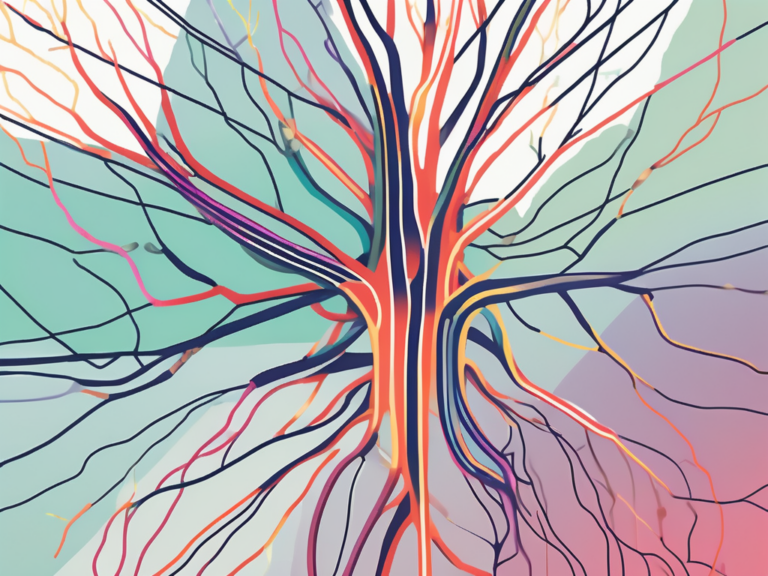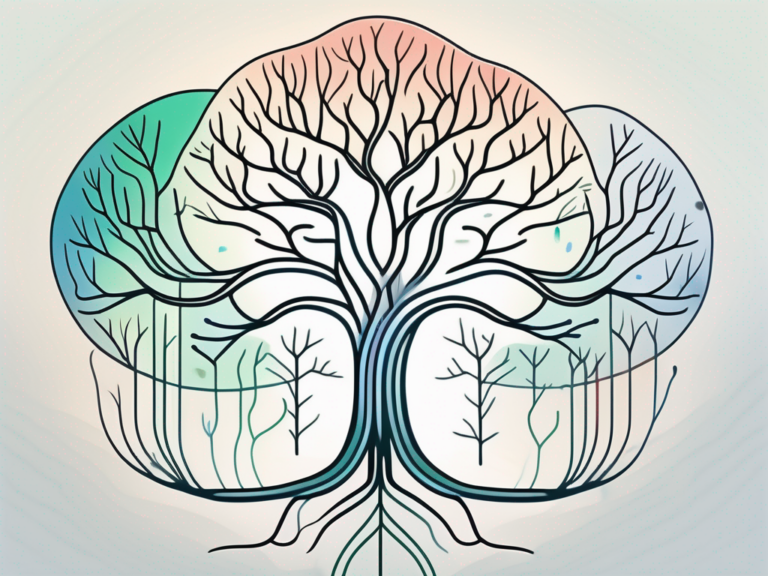Explaining Vestibular Nerve to kids
The vestibular nerve plays a crucial role in our daily lives, but what exactly is it? Let’s dive into the basics of the vestibular nerve and understand how it works.
Understanding the Basics of the Vestibular Nerve
What is the Vestibular Nerve?
The vestibular nerve is a crucial component of our nervous system that plays a vital role in maintaining balance and orientation. As part of the vestibulocochlear nerve, also known as the eighth cranial nerve, the vestibular nerve is responsible for transmitting sensory information related to balance and spatial orientation.
Within the inner ear, the vestibular nerve is intricately connected to the vestibular labyrinth, a complex system of fluid-filled canals and sensory receptors. These structures work in harmony to detect changes in head position and movement, allowing the brain to make real-time adjustments to ensure stability and equilibrium.
The Role of the Vestibular Nerve in the Body
Upon receiving signals from the inner ear, the vestibular nerve transmits this information to specific regions of the brain, including the brainstem and cerebellum. The brainstem processes the incoming sensory data to coordinate reflexes that control eye movements and stabilize posture, while the cerebellum fine-tunes these responses to ensure smooth and coordinated movements.
In addition to its primary function in balance maintenance, the vestibular nerve also contributes to spatial awareness and spatial memory. By continuously updating the brain on the body’s position in relation to its surroundings, the vestibular nerve enables us to navigate our environment with precision and confidence.
Breaking Down the Complexities of the Vestibular Nerve
The Anatomy of the Vestibular Nerve
The vestibular nerve, a crucial component of the vestibular system, is a fascinating network of thousands of tiny nerve fibers that serve as the communication highway between the inner ear and the brain. These intricate fibers act as diligent messengers, constantly relaying essential information related to balance and spatial orientation. Within the inner ear, there are specialized sensory cells known as hair cells. These remarkable hair cells play a pivotal role in detecting motion and gravity, providing the foundation for our sense of equilibrium. As we engage in various movements, these hair cells respond by initiating signals that travel through the vestibular nerve, ultimately reaching the brain for processing.
Furthermore, the inner ear’s labyrinthine structure houses the vestibular system, which comprises the semicircular canals and the otolithic organs. These structures work harmoniously to detect angular and linear movements, respectively. The semicircular canals are responsible for sensing rotational movements, such as turning the head, while the otolithic organs detect linear movements like acceleration or deceleration. This intricate system highlights the vestibular nerve’s role as a vital conduit for transmitting these sensory inputs to the brain, allowing for seamless coordination of our movements and balance.
How the Vestibular Nerve Works
Delving deeper into the mechanics of the vestibular nerve, we uncover the remarkable process by which our movements are translated into electrical signals for the brain’s interpretation. As we initiate head movements, the fluid within the inner ear undergoes a corresponding shift in position. This fluid movement sets off a chain reaction, stimulating the hair cells within the vestibular system. These hair cells, in turn, convert the mechanical stimulation into electrical signals that travel through the vestibular nerve with remarkable speed and precision.
Once these intricate signals reach the brain, they are swiftly processed to provide real-time feedback on our body’s position in space. This feedback loop enables the brain to make instantaneous adjustments to our posture and muscle activity, ensuring that we maintain stability and equilibrium. The seamless coordination between the vestibular nerve, inner ear structures, and brain underscores the remarkable complexity and efficiency of the human vestibular system in facilitating our everyday movements and spatial awareness.
The Vestibular Nerve and Balance
The Connection Between the Vestibular Nerve and Balance
The vestibular nerve, also known as the eighth cranial nerve, plays a crucial role in maintaining our balance and spatial orientation. This nerve is part of the vestibular system, which includes the inner ear and brain structures that help us perceive and adjust to our position in space. Working in harmony with our eyes, muscles, and joints, the vestibular nerve ensures that we can move confidently and smoothly through our environment.
Moreover, the vestibular nerve contributes to our sense of equilibrium by detecting rotational movements of the head. This information is vital for tasks such as maintaining a stable gaze while turning our heads or keeping our balance on uneven surfaces. Without the intricate feedback loop between the vestibular nerve and the brain, simple activities like walking or standing upright would be challenging and unstable.
How the Vestibular Nerve Helps Us Stay Upright
The vestibular nerve serves as a rapid communication channel between the inner ear and the brainstem, allowing for quick adjustments to body position. When the nerve detects changes in head movement or orientation, it sends signals to the brainstem, which then coordinates muscle responses to counteract any potential loss of balance. This reflexive mechanism operates seamlessly, often without conscious awareness, to keep us steady on our feet and prevent falls.
Furthermore, the vestibular nerve contributes to our spatial awareness by providing information about the direction and speed of our movements. This input allows us to navigate our surroundings effectively, judge distances accurately, and maintain a stable posture during dynamic activities. By integrating sensory inputs from the vestibular system with visual and proprioceptive cues, the vestibular nerve helps create a comprehensive representation of our body’s position in space, enabling us to move with precision and coordination.
Common Problems with the Vestibular Nerve
The vestibular nerve, a crucial component of the inner ear, plays a significant role in maintaining balance and spatial orientation. While the vestibular nerve typically operates seamlessly, various factors can lead to its dysfunction. In addition to the symptoms mentioned earlier, individuals with vestibular nerve disorders may also experience nausea, vomiting, and a sense of disorientation. These symptoms can significantly impact a person’s quality of life, making everyday activities challenging.
Diagnosis and Management of Vestibular Nerve Disorders
When faced with symptoms indicative of vestibular nerve problems, seeking prompt medical attention is essential. A thorough evaluation by a healthcare provider, which may involve specialized tests like electronystagmography or vestibular evoked myogenic potentials, can help pinpoint the root cause of the issue. Based on the diagnosis, treatment strategies tailored to the individual’s needs can be implemented.
Treatment Options for Vestibular Nerve Problems
Upon diagnosis, treatment plans for vestibular nerve disorders are typically multifaceted. In addition to conventional medical interventions, such as vestibular rehabilitation therapy and medication to alleviate symptoms like vertigo, lifestyle modifications may also be recommended. These modifications could include dietary changes to reduce sodium intake, as well as incorporating specific exercises to enhance balance and proprioception.
Fun Facts About the Vestibular Nerve
Interesting Vestibular Nerve Trivia for Kids
Did you know that the vestibular nerve also exists in animals? That’s right! Dogs, cats, and even whales have a vestibular nerve that helps them maintain their balance, just like we do. It’s fascinating to think about how similar our bodies are to those of other creatures.
The Vestibular Nerve in Animals
In animals, the vestibular nerve is not only important for balance but also for their survival. It helps them navigate their surroundings, detect prey or predators, and move with agility. Imagine how different the world would be for animals without their amazing vestibular nerves!
Furthermore, the vestibular nerve in animals plays a crucial role in their social interactions. For example, in a pack of wolves, the vestibular nerve helps each member maintain their position within the hierarchy by influencing their movements and coordination. This nerve is not just about physical balance; it also contributes to the intricate dynamics of animal communities.
Evolutionary Wonders of the Vestibular Nerve
Delving into the evolutionary aspect, the vestibular nerve has been a key player in the survival and adaptation of species over millions of years. It is a testament to the intricate design of nature that this nerve has persisted and evolved to suit the needs of various animals in different environments. From the acrobatic maneuvers of a monkey swinging through trees to the graceful swim of a dolphin in the ocean, the vestibular nerve is a silent hero behind these remarkable feats.
Simplifying the Vestibular Nerve for Kids
Easy-to-Understand Analogies for the Vestibular Nerve
Explaining complex scientific concepts to kids can be challenging, but analogies can help make things easier to understand. Think of the vestibular nerve as a superhero called “Balance Man”! Just like a superhero uses their special powers to keep the world safe, the vestibular nerve uses its superpowers to keep us balanced and steady.
Imagine “Balance Man” as a guardian angel perched on your shoulder, constantly whispering messages to your brain about how to stay upright and coordinated. Just like a trusty sidekick, the vestibular nerve is always by your side, ready to spring into action whenever you need it.
Vestibular Nerve in Everyday Life
Have you ever wondered why you can ride a bike without falling over or jump and land without toppling over? It’s all thanks to your amazing vestibular nerve! From playing sports to dancing to walking on a tightrope (figuratively speaking), your vestibular nerve is there to help you every step of the way.
Picture your vestibular nerve as a skilled acrobat, effortlessly balancing on a high wire while juggling multiple tasks. Just like this acrobat, your vestibular nerve performs incredible feats behind the scenes to ensure you stay steady on your feet, no matter what challenges come your way.
So the next time you feel dizzy or have trouble keeping your balance, remember that your vestibular nerve is working hard to keep you steady. It’s a fascinating part of our bodies that helps us navigate the world around us!






